Second Lieutenant Benjamin Holmes Hodges
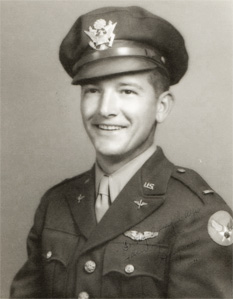
- Unit: 78th Fighter Group, 82nd Fighter Squadron
- Service Number: O-818485
- Date of Birth: January 24, 1921
- Entered the Military: September 8, 1942
- Date of Death: June 20, 1944
- Hometown: Reynolds, Georgia
- Place of Death: Rouy-le-Petit, near Nesle, France
- Award(s): Purple Heart
- Cemetery: Plot G, Row 12, Grave 8. Normandy American Cemetery, Colleville-sur-Mer, France
Mentored by Mr. Kenneth Tucker
Rockdale County High School
2012-2013
Early Life
On January 24, 1921, Benjamin Hodges was born to Eugene Walton Hodges and Winifred (Winnie) Hodges in Reynolds, Georgia. He had an older brother, Eugene Walton, Jr. His father worked as a clerk at the railroad depot, and his mother played the organ at the First Baptist Church.
On November 10, 1941, his older brother, Eugene Walton, Jr., enlisted in the U.S. Navy and piloted torpedo planes. He served until his discharge on January 14, 1946.
According to his family, Hodges was like many of his peers, yet very unique. He studied hard in school and played hard when class was out. He was an honors student in high school and maintained a high level of success in the classroom; however, this is not the only place where he thrived. He was also an avid piano player and an animal lover, as he admired his pet horse.
He graduated from Reynolds High School and followed his brother to Mercer University on a merit scholarship to study civil engineering.
He married Dorothy Brunson in Taylor County soon after joining the U.S. Army Air Forces.
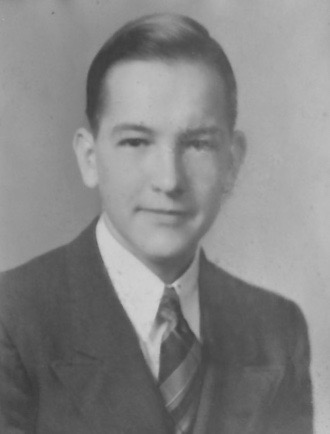
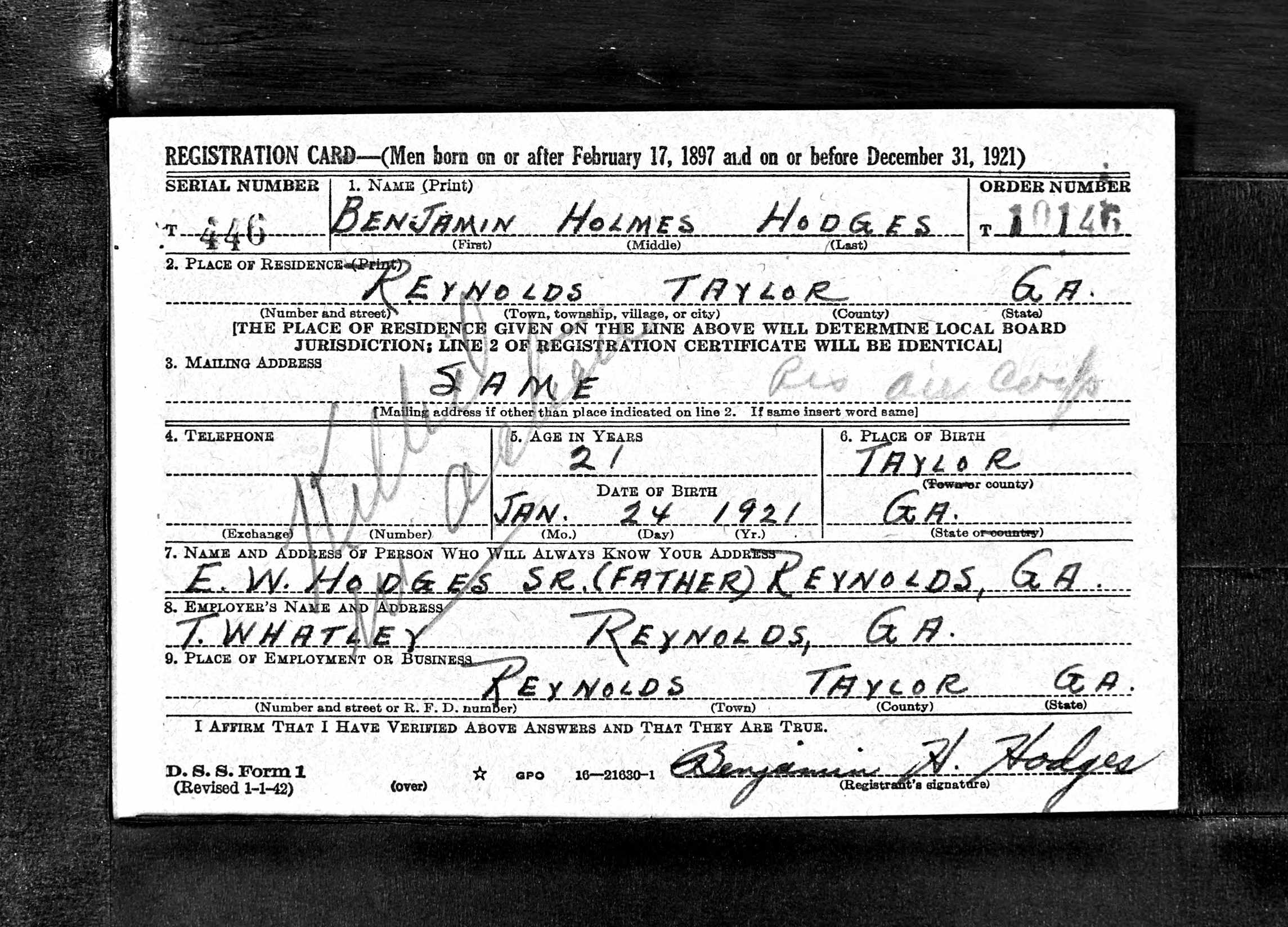
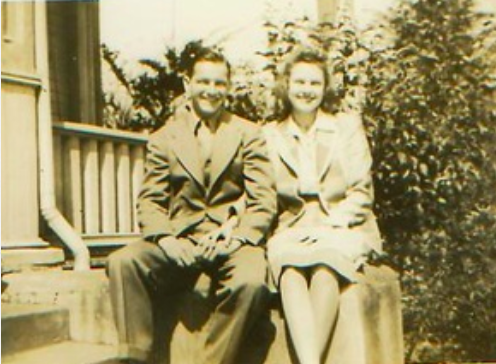
Homefront
Reynolds remained relatively unchanged during World War II. The rest of Georgia, however, was a different story. Agriculture in the state shifted focus to growing for the military. Cities like Atlanta became flooded with factory workers who produced materials for the war effort.
During the war, membership in ROTC programs skyrocketed in schools like Georgia Tech and enlistments in the military as young men flocked to the service. What was commonplace on the homefront was that everybody supported the war effort in some capacity, not just in Georgia but across the nation.
Military Experience
Training to be a Pilot
Hodges enlisted in the U.S. Army Air Forces before being selected for active duty pilot training in September 1942. His training occurred throughout the southeast in Mississippi, Arkansas, Alabama, Texas, and Florida before being assigned to the 78th Fighter Squadron in the 82nd Fighter Wing. He logged very few hours, less than 100, before entering combat in his P-47.
78th Fighter Squadron
The 78th Fighter Squadron (nicknamed “The Duxford Eagles”) was based in Duxford, England, from April 1943 until October 1945. The unit flew P-38 Lightning, P-47 Thunderbolt, and P-51 Mustang aircraft to support Allied air operations over Normandy, France.
June 7, 1944
On June 7, 1944, Hodges was flying his P-47 aircraft on a clear day. Upon returning to base to land, he had a landing accident in which he “landed long and loop at [the] end of [the] runway.” The accident was ruled a pilot error, but he survived.
A ‘Crossbow’ Mission
Hodges’s final mission took him deep over enemy territory in occupied France. His squadron took off early on June 20, 1944, to complete a “crossbow” mission. These missions targeted strategic points of interest that supported the German military (such as factories or munitions plants). This mission was specifically intended to eliminate V-1 rocket stations. His mission was not directly tied into the D-Day campaign or the liberation campaign, but instead, in some of the first attacks on German soil since they had taken the continent.
Lost in the Dogfight
The mission was dangerous and took place during a dangerous storm. While en route, the unit encountered a formation of over 100 Messerschmitt 109 fighter aircraft. Hodges climbed to intercept them. His plane was lost in the dogfight and crashed into a bog near Rouy-le-Petit, near Nesles, France. He was initially classified as Missing in Action and was confirmed as Killed in Action after the war.
A parade is held in his honor every year in the village where he crashed. He is buried in Normandy American Cemetery and memorialized in Rouy-le-Petit, France, and Hillcrest Cemetery in Reynolds, Georgia.
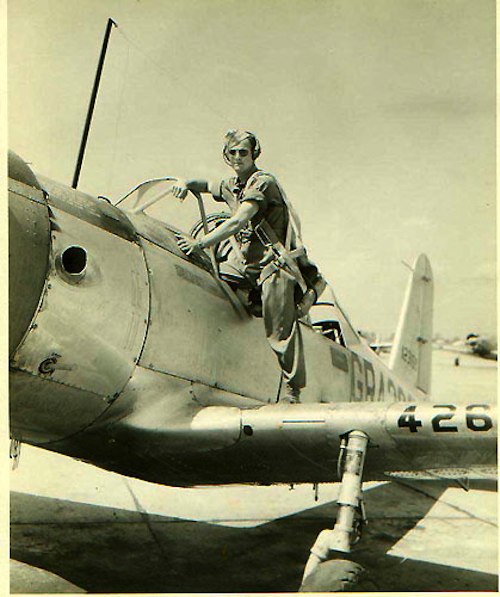
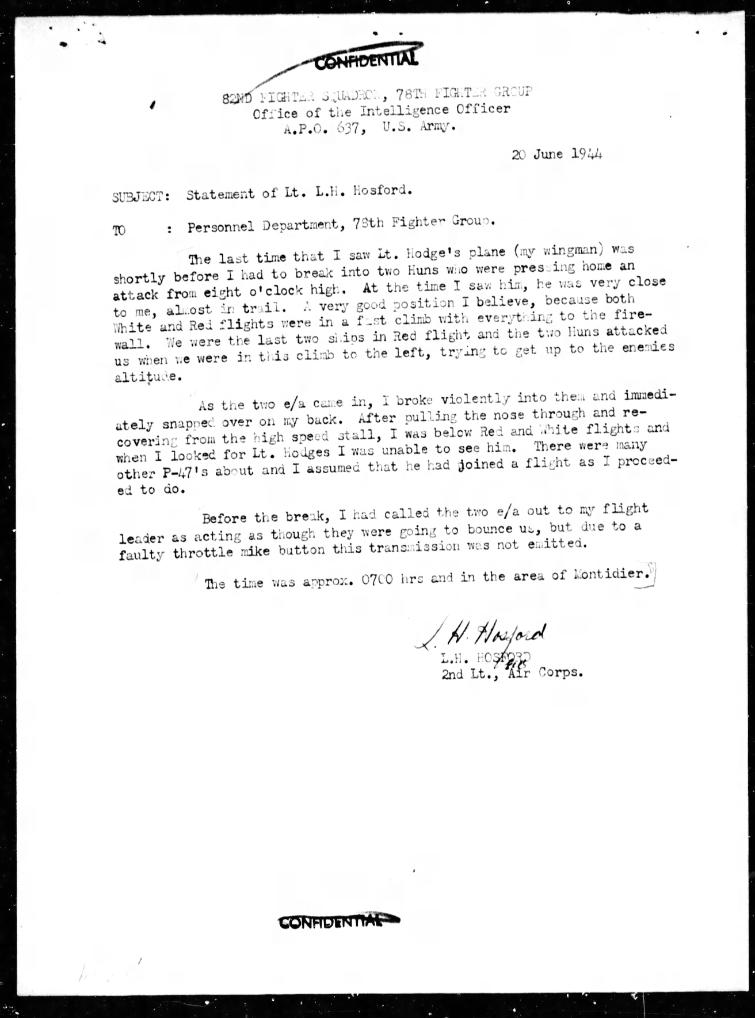
Eulogy
June 20, 1944. What may seem like another chaos-filled day among the hundreds that comprised the Second World War holds a special meaning in the eyes of many. On this day, an airman for the great state of Georgia was killed in action. Second Lieutenant Benjamin H. Hodges, a beloved son, brother, friend, comrade, and husband, paid the ultimate price for our freedom over the skies of occupied France in the then seemingly endless struggle to end oppression and to spread the democratic values held dear to the United States and our allies.
Benjamin, I’m sure you remember growing up in your small house in Reynolds, Georgia, for it was in this close-knit and small southern community that you adopted many of the values that guided your young life. You were an educated man, an honors student with a passion for science, and a scholarship recipient of Mercer University. You were a creative man, as you adorned your notebooks with artistic sketches and played the piano in your spare time. You were a caring man, as you cherished and were cherished by your brother, family, fellow airmen, and high school sweetheart, who later became your wife, Dorothy.
Your childhood was not unlike most other boys of the time, and like many of your peers, you answered the call to serve the nation during a time of crisis. After your freshman year, you left college to enlist in the Army Air Corps Reserves before being selected for pilot training and an active-duty officer’s commission. After completing the flight program’s rigorous requirements, you made your way across the Atlantic and reported to the 82nd Squadron, 78th Fighter Wing, 8th Air Force.
In this unit, you saw action and made your valid contribution to the war effort. You completed just 11 missions before your tragic death, and you truly gave your best.
It was a renowned general on another front who said, “Duty, Honor, Country: Those three hallowed words reverently dictate what you ought to be, what you can be, what you will be.” Although you were not among the audience, General Douglas MacArthur was addressing in his speech given some 20 years after the Normandy Campaign; you still realized the true meaning and poetic beauty his words possessed in your lifetime. You willingly and selflessly sacrificed your own life for the freedom of millions at home and abroad, and the price you paid for us all to be here today will never be forgotten. I shall return one day to render the proper military symbol of respect once I have earned the right to do so as an aviator and an officer. Ben, you fulfilled, you became, you are duty, honor, country. Thank you, sir.
Godspeed. And God Bless.
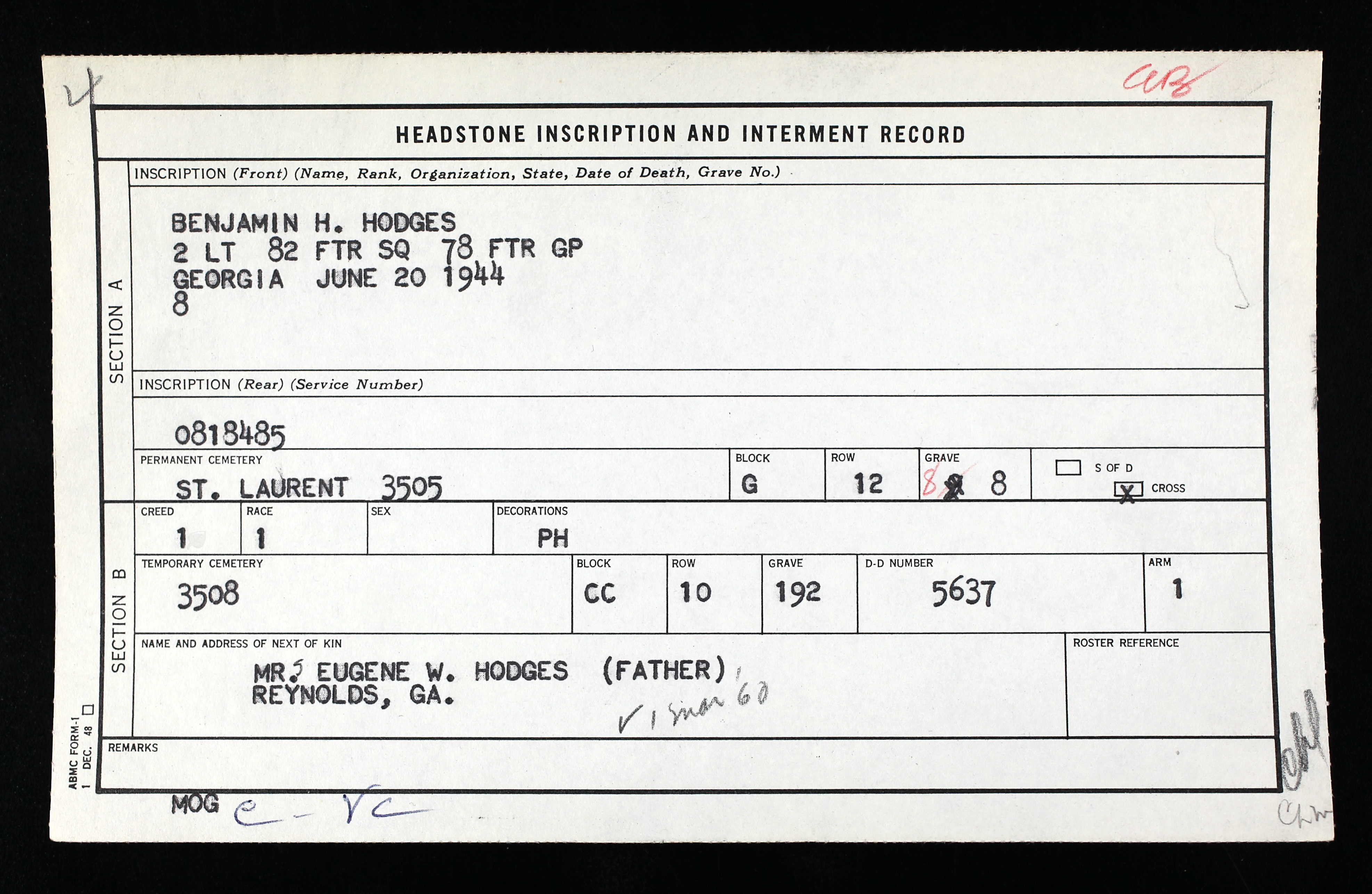
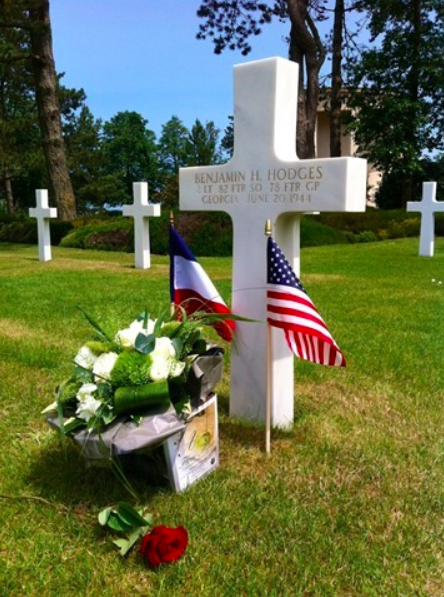
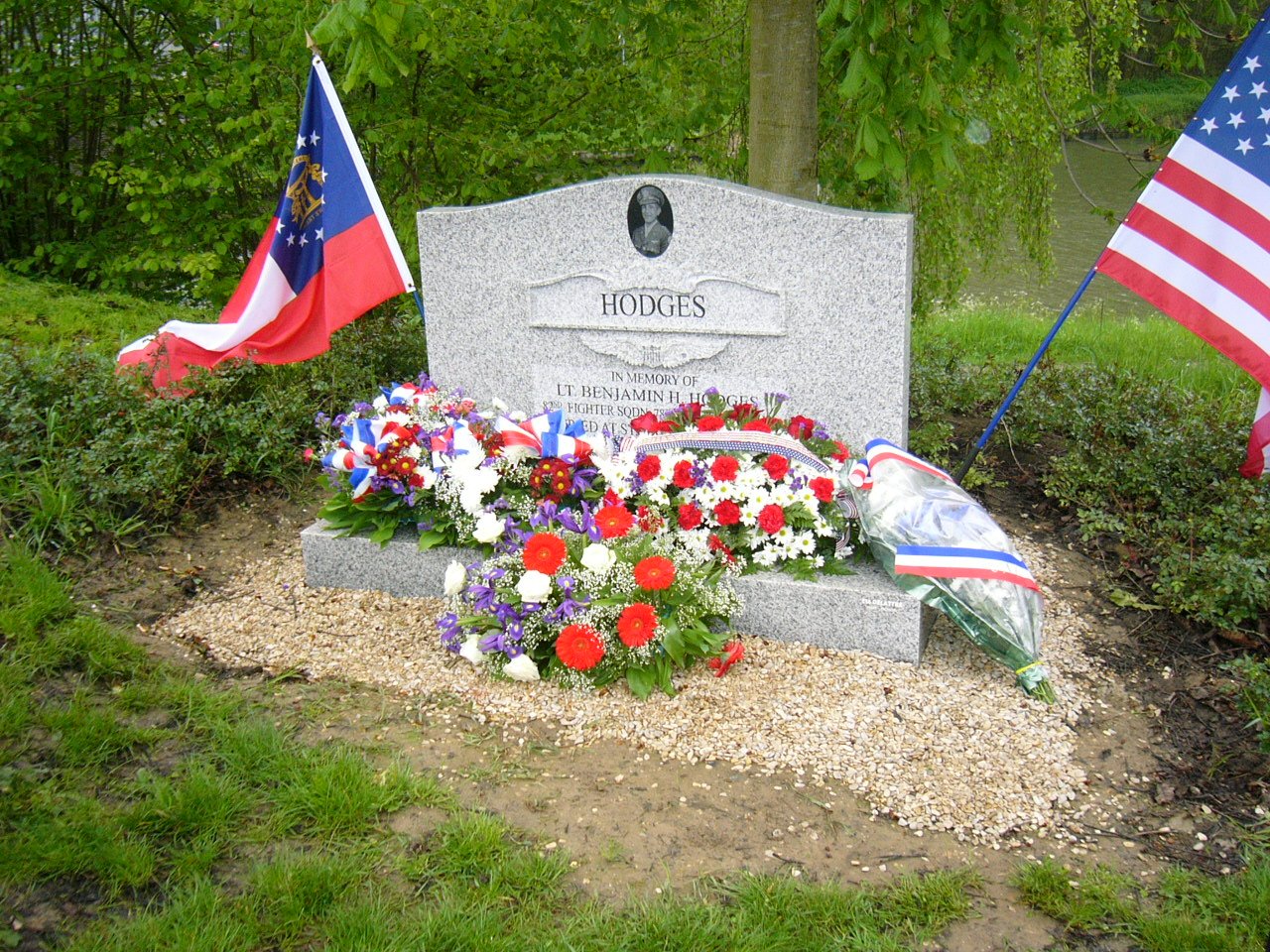
Reflection
It is not a simple task to gather information about a soldier from World War II, but it can be done. Our research was conducted in three separate phases: searching the internet, meeting with the Hodges family to gain clarity and more critical information; and finding any missing pieces at the National Archives.
The most crucial step in learning more about Benjamin was meeting the Hodges family. In all, we successfully gathered enough information on Benjamin Hodges to write an appropriate eulogy to deliver at the American Cemetery in Normandy.
The best way to describe what I experienced for the two weeks of the Institute would be in one word: adventure. My teacher and I left Atlanta on June 14 and saw DC later that afternoon. The work began soon after, as we attended our first lecture the next morning and then proceeded to tour the National Mall and all of the war memorials later in the afternoon. We later laid a wreath at the National World War II Memorial after an in-depth tour from a member of the Friends of the Memorial organization.
At the American cemetery, we delivered the eulogies for our soldiers after hiking up a winding trail from the beach. By the end of the day of remembrance, we were in Paris preparing to return to the United States.
The experience was much more than a study trip. Everybody left having felt a profound feeling of sacrifice after experiencing what we did. However, the journey opened my eyes to much more than the sacrifices. I now desire to learn foreign languages, study abroad again, and pursue the most challenging undergraduate education possible. It was a life-changing event, and I know I will never forget it.
Bibliography
Primary Sources
Benjamin H. Hodges. Headstone and Interment Records for U.S. Military Cemeteries on Foreign Soil. Digital Images. ancestry.com.
Benjamin H. Hodges. World War II Army Enlistment Records, 1938-1946. Digital Images. ancestry.com.
Benjamin Holmes Hodges. World War II Draft Cards Young Men, 1940-1947. Digital Images. ancestry.com.
Eugene Walton Hodges, Jr. U.S. Department of Veterans Affairs BIRLS Death File, 1850-2010. ancestry.com.
Eugene Walton Hodges, Jr. World War II Draft Cards Young Men, 1940-1947. Digital Images. ancestry.com.
Georgia. Taylor County. 1920 U.S. Federal Census. Digital Images. ancestry.com.
Georgia. Taylor County. 1930 U.S. Federal Census. Digital Images. ancestry.com.
Georgia. Taylor County. 1940 U.S. Federal Census. Digital Images. ancestry.com.
Hodges, Eugene. Personal interview with the author. May 2013.
Secondary Sources
“2Lt Benjamin H Hodges.” Find a Grave. Updated August 8, 2010. Accessed June 23, 2021. www.findagrave.com/memorial/56645667/benjamin-h-hodges.
“78th Fighter Group.” American Air Museum in Britain. Updated August 22, 2019. Accessed January 23, 2021. www.americanairmuseum.com/unit/518.
“78th Fighter Group Accidents Report Homepage.” American Air Museum in Britain. Updated August 22, 2019. Accessed January 23, 2021. www.americanairmuseum.com/unit/518.
Ambrose, Stephen E. Band of Brothers: E Company, 506th Regiment, 101st Airborne from Normandy to Hitler’s Eagle’s Nest. New York: Simon & Schuster, 2001.
“Benjamin H. Hodges.” American Battle Monuments Commission. Accessed January 23, 2021. www.abmc.gov/decedent-search/hodges%3Dbenjamin.
“Benjamin H. Hodges.” Find a Grave. Updated November 14, 2008. Accessed June 23, 2021. www.findagrave.com/memorial/31401863/benjamin-h.-hodges/photo.
Eisenhower, Dwight D. Crusade in Europe. Garden City: Doubleday, 1948.
Kershaw, Alex. The Bedford Boys: One American Town’s Ultimate D-Day Sacrifice. Cambridge: Da Capo, 2003.
Osmont, Marie-Louise. The Normandy Diary of Marie-Louise Osmont: 1940-1944. New York: Random House, 1994.
Stokesbury, James L. A Short History of World War II. New York: William Morrow and, 1980. Print.
Terkel, Studs. “The Good War”: An Oral History of World War Two. New York: Pantheon, 1984. Print.
Benjamin H. Hodges, Report of Aircraft Accident. June 7, 1944. Digital Image. fold3.com.
Missing Air Crew Report 5943. June 20, 1944. Digital Image. fold3.com.

